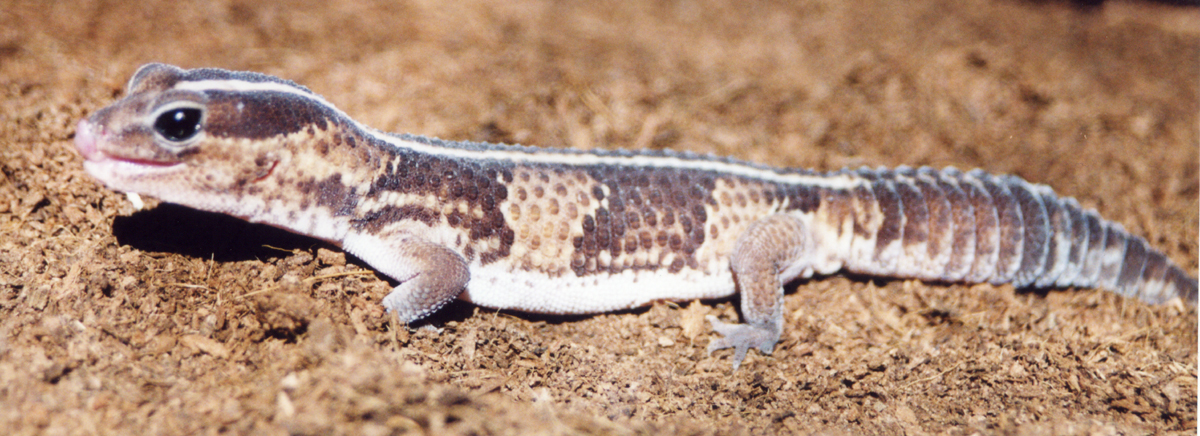Ground-dwelling African Fat-Tailed Gecko is found throughout West Africa. Deserts of West Africa are home to these creatures, which may be found in the savannahs, riverbanks, and other dusty areas. Eublepharinae, which contains the leopard gecko, is a subfamily of nocturnal lizards. Many things set this African Fat-Tail Gecko apart from other species:
- They are both terrestrial and nocturnal.
- They have eyelids that can be moved to keep dust out of their eyes.
- Their large, caterpillar-like tail is the source of their fabled Fat-Tailed look.
It is common for these animals to be between 7 and 9 inches in length, and their coat is frequently striped with brown or beige. Beginners and first-time lizard keepers will find them easy to care for since they are docile.
What Is a Fat-Tailed Gecko from Africa?
The Eublepharinae family includes the lizard Hemitheconyx caudicinctus. An African Fat-Tailed Gecko’s calm demeanour and distinctive patterning make it a favourite choice among Gecko enthusiasts. They come from an arid region of the West and spend a lot of their time in humid environments.
However, African Fat-Tailed Geckos are generally smaller than Leopard Geckos and have fewer colour options.
The fat tail of African Fat-Tailed Geckos is one of its most distinctive characteristics. Their big tails are a protective mechanism known as ‘caudal autotomy,’ which stores fat in the tail. When attacked or vulnerable, they can shed their tails.
Fat-Tails are well-known for their calm demeanour when kept in a zoo. They are becoming more common in the business and are a good choice for first-time homebuyers.
African Fat Tailed Gecko Availability
Even while African fat-tailed geckos have not yet gained the same popularity as leopard geckos, breeders who specialise in the species’ captive reproduction are already selling them in large quantities on the internet. There’s a good chance they’ll be at your area reptile show.
Although wild-caught geckos are sometimes available, we highly advise against doing so in favour of buying creatures that have been raised in captivity. You may now choose from a wide variety of gorgeous hues thanks to the proliferation of patterns and colour morphs during the last five years. These geckos may survive for up to 15 years if properly cared for in captivity.
A UVB lamp isn’t necessary for African fat-tailed geckos since they’re nocturnal. Instead, they need 10-12 hours of light each day. We think it’s better if the heat comes from the bottom up. An under-tank heat pad may be used in a glass enclosure, while in a rack system, a thermostat-controlled heat wire or heat tape is the breeder’s best alternative.
Due to reptiles’ cold-blooded nature, it is imperative that the heat source stays at 90F and is located at one end of the enclosure. A reptile thermometer may be used to check the temperature. The geckos will be able to thermoregulate by migrating away from the heat source and towards a more remarkable part of the cage, where temperatures will be in the upper 70s to lower 80s. To put it another way, avoid heating the whole enclosure.
The banded or striped shape of these rare reptiles is determined during conception. Light brown or beige is the natural foundation colour of any African Fat-Tailed Gecko. Dark brown banding covers the whole body, including the tail feathers, and extends from the shoulders to the tail. A white underbelly is expected, and a white line is running down the back of the head for some.
I hope you will find it a helpful post!!
